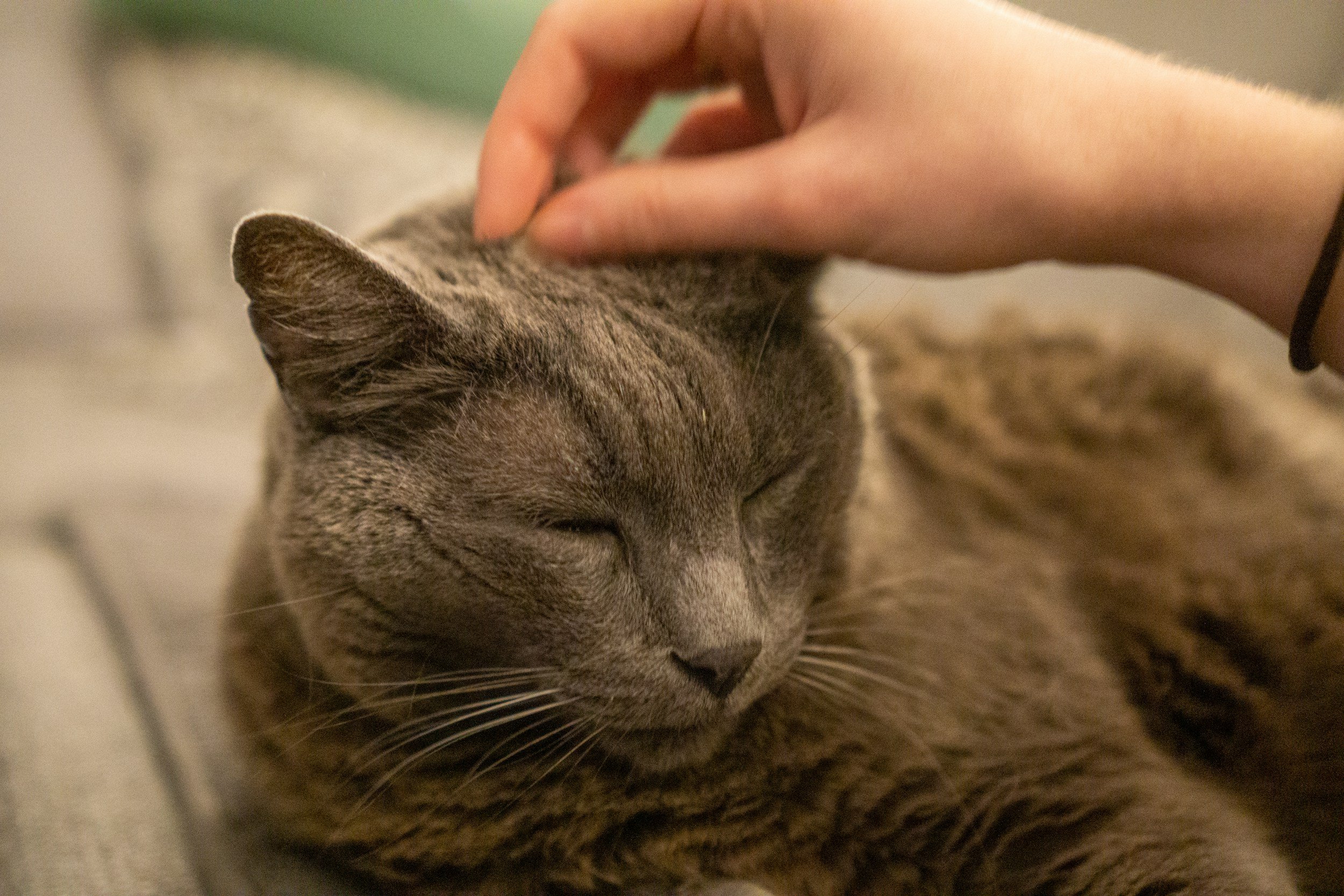Saying Goodbye: Navigating Your Pet’s Transition
Human companionship with pets is beautiful, but there’s something every pet parent must grapple with: grief and loss.
This is inherent to pet ownership. The vast majority of animals kept as pets have far shorter lifespans on average than humans, and many people will love and lose multiple pets throughout their lifetimes. It is often the hardest and most devastating part of the whole pet experience.
However, we understand that this is the natural process of life. The time our pets spend with us is brief, but often no less meaningful than the time we spend with other people. I find this particularly evident in the way many of us grieve our pets at the end of their time here on Earth.
Many folx struggle to be with other humans who are dying or approaching death. We are required to walk a line between spending precious time with them, being with our own feelings, and honoring their transition’s process. There is often a deep sense of fear, for both the person dying and their loved ones.
For our pets, much of this is the same. But – they have a comfort with transition that humans don’t always cultivate. They move through the process more easily, often disconnected from that fear state we often have.
It’s also something they typically prefer to do alone. This is why we often see animals withdraw and hide away when it’s time for them to pass on. In dog packs, the other dogs will naturally give the dying animal this space. When it became clear that our dog Maisy needed to be euthanized after having a tumor burst, we brought our other dog, Reggie, into the room where we’d be doing her in-home euthanasia. He sniffed her and then withdrew to the other side of the room, watching, sometimes pacing, but not participating or comforting her. He understood she was severely injured and dying and gave her space.
Meanwhile, many humans desperately want to care for our pets until the very end. We want to spend that final, precious time at their side, and to know that they got everything they needed out of this life. The people I work with have, in almost all cases, done a wonderful job of caring for their pets over the course of their lives – and they continue to do so. But the truth is, your needs and the needs of your pet are both important to take into consideration.
This is where animal communication becomes a wonderful tool. We can listen to them as they will tell us they’re ready to go, and honor that when the time comes. Pets have their way of letting us know what support they need, and communicating with them intuitively can help us understand it from their perspective.
This is especially true for cases of euthanasia. We are often the ones who decide the date our pets will pass on. While this is often honoring our pet’s desire for a peaceful, less-painful transition, it can be hard for us to feel like we’ve honored them much at all.
I recently worked with a client whose dog was ready to go. They’d made the appointment for her in-home euthanasia on a day where she’d been in particularly poor condition – but on the day of, she seemed to rally. It was understandable that this was emotionally difficult for the entire family.
However, this type of end-of-life rally is not at all uncommon. Animals of all kinds (including humans) often exhibit a burst of relative vigor before finally slipping away. While it may seem like they’re fighting back, it does not mean they aren’t ready to go. It’s all part of the roller coaster of life and death.
When we helped Maisy transition, her personality was still intact. It was clear that she still wanted my care and attention. She wagged her tail and tried to get up when the vet arrived – happy to see a new friend! But, this was not a sign that she shouldn’t be euthanized; we all knew it was not in her best interest to continue living, given the state of her cancer.
Ours is not a culture that is comfortable with death and grieving. I aim to help people make space for this process with their pets. Easing the transition is often the most helpful and loving thing we can do for them – and for ourselves. Not to mention, allowing ourselves to honor the waves of grief and other emotions that will come along with it.
In the coming months, I’ll be collaborating with Paula Rivadeneira of Cholla Afterlife, Dr. Kellie Bartlett of Kindred Spirits, and Andrea of Pura Vida Pet Care on a quarterly in-person panel all about the end-of-life journey for pets. Stay tuned for more information – and if you need 1:1 support for you and your pet, I’m always here.


